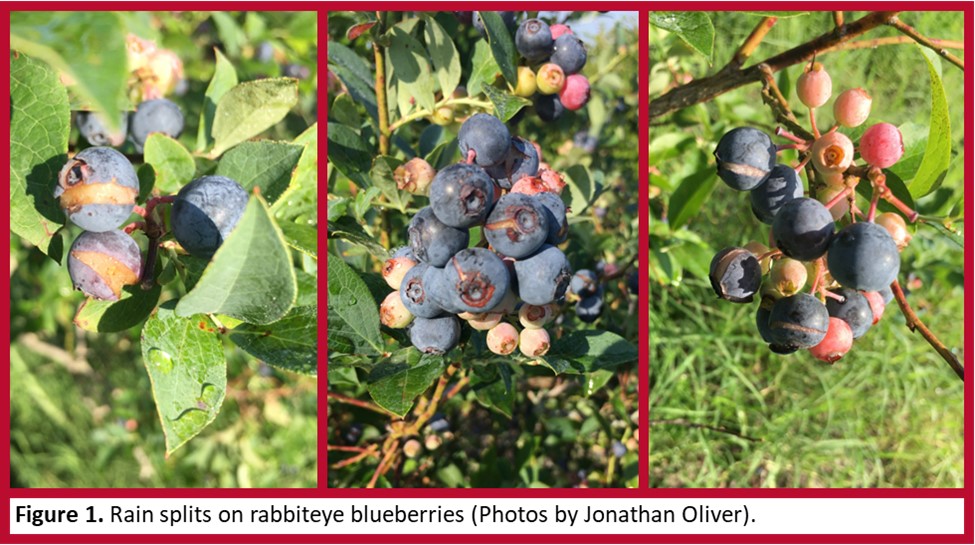Plants need water to grow, but rainfall near harvest can have negative impacts on blueberries. One of these is the tendency for ripe fruit to split after rainfall (Figure 1). Rain splitting typically occurs when water is imbibed through the skin of ripe berries. Likewise, water taken up by the roots can also contribute to fruit splits. Ripe fruit has a tendency to split, in part, because the skin gets relatively less elastic as the fruit ripens and is not able to expand to accommodate water uptake. In addition, previous damage to the skin, from insect feeding, freeze damage, or other injuries, can also weaken the skin and make rain splits more likely to occur. Splitting is often noted to be most severe if rain follows an extended period of dry weather, and some cultivars have been noted to be more prone to rain splits than others. Overhead irrigation, since it leads to moisture on the berry surface, can also cause these types splits.
While some minor splits can heal somewhat, large splits destroy the berry integrity, result in leakage, and provide entry points for pathogens and pest infestation. Split fruit is unmarketable, and if a significant portion of the fruit becomes split, this can directly impact harvest quality. Since these fruit splits have an environmental cause (i.e. rainfall) there is not much that can be done about them; however, to reduce the chances of fruit splits, it is recommended to maintain even soil moisture in the field via irrigation when possible. Likewise, due to the potential for rain splits to occur, it is important to harvest ripe fruit in a timely manner prior to forecasted rainfall events.
